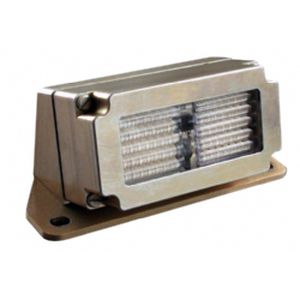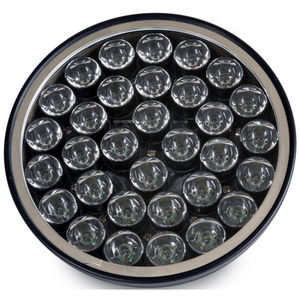
Landing light PAR 64for aircraftLEDhalogen
Add to favorites
Compare this product
fo_shop_gate_exact_title
Characteristics
- Type
- landing
- Domain
- for aircraft
- Technology
- LED, halogen
- Other characteristics
- white, high-intensity
Description
Peak intensity 600,000 cd
Input voltage 28V AC/28V DC
Power consumption 170W AC/140W DC
Operating temperature: -54°C to +71°C
Storage temperature -54°C to +85°C
Mean Time Between Failure in excess of 23,000 hours (fan replacement required at 13,000)
Weight: 938g
Aviation White 6000K typ
Aluminium housing, matt black anodised finish
Hard coated polycarbonate lens
Output: 12 degrees full width to 10% max
Qualified to
Environmental: MIL-STD 810G
EMC: MIL-STD 461F
RTCA-DO 160G
Power input: MIL-STD 704A
RTCA-DO 160G
Benefits
High through life cost savings over existing technology
Replacement unit fully meets 4559, Q4559X, Q4559, Q5559
Excellent resistance to shock and vibration
No future requirement to replace bulbs
Utilises existing housing and transformers
5 year warranty
Repairable unit
Reduced power consumption
Doesn’t suffer degradation over time
Further Details
For military aircraft manufacturers and operators who use halogen based sealed beam landing lights and need improved operational readiness and reduced power consumption, the Oxley high performance PAR 64 LED replacement landing light offers a 100 fold increase in operational life which results in reduced mission downtime and maintenance requirements. This industry leading performance eliminates the need for spare part inventory and will result in significant operational and maintenance cost savings. The Oxley LED lighting based solution is a form fit replacement, requires no aircraft modification and delivers the maximum optical power across the full operating temperature range of the aircraft.
*Prices are pre-tax. They exclude delivery charges and customs duties and do not include additional charges for installation or activation options. Prices are indicative only and may vary by country, with changes to the cost of raw materials and exchange rates.








